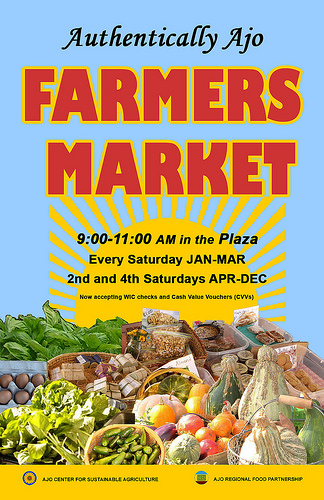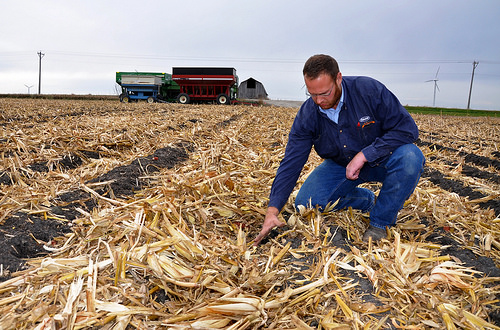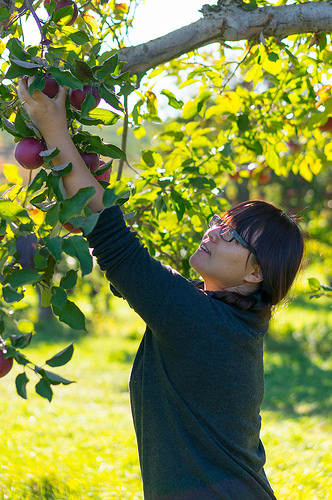
This rule will ensure consumer confidence in the growing organic market by promoting consistency across the organic industry, supporting the continued growth of the organic livestock and poultry sector. (Click to view larger version)
The mission of the National Organic Program, part of USDA’s Agricultural Marketing Service (AMS), is to protect the integrity of organic products in the U.S. and around the world. This means creating clear and enforceable standards that protect the organic integrity of products from farm to table. Consumers trust and look for the USDA organic seal because they know that USDA stands behind the standards that it represents.
Today, USDA announced a final rule regarding organic livestock and poultry production practices. The rule strengthens the organic standards, and ensures that all organic animals live in pasture based systems utilizing production practices that support their well-being and natural behavior. It’s an important step that will strengthen consumer confidence in the USDA organic seal and ensure that organic agriculture continues to provide economic opportunities for farmers, ranchers, and businesses across the country. Read more »
Tags: AMS, Farmers, FSA, KYF2, Local and Regional Foods, local food, Market News, National Organic Program, National Organic Standards Board, NOP, NRCS, organic, Organic 101, organic certification, Producers, Ranchers, Rural America, rural communities, Standards
 Know Your Farmer, Know Your Food
Know Your Farmer, Know Your Food

FMPP grant helped Ajo Farmers Market expand its vendors to offer a variety of foods and activities from fresh local veggies, stews and soups to Kids Month with mural painting activities for kids!
If there is one word that best embodies agriculture, it is entrepreneurship. Over the course of my time at USDA, I’ve had the chance to meet with farmers, ranchers and food business of all sizes and in all parts of the country. The faces of these entrepreneurs and their innovative strategies and business models reflect the diversity that makes this country strong. Each year, USDA helps thousands of agricultural producers and businesses enhance their marketing efforts and bring healthy, nutritious food to communities– and I’m excited that this week, we’ve announced another opportunity to support their work.
My agency, USDA’s Agricultural Marketing Service (AMS), announced the availability of more than $27 million in grants to help ensure the livelihoods of our nation’s farmers and ranchers while strengthening rural economies. The announcement included $26 million in AMS grant funding from the Farmers Market and Local Food Promotion Program through the Local Food Marketing Promotion Program (LFPP) and the Farmers Market Promotion Program (FMPP). Read more »
Tags: AMS, Arizona, economic opportunity, Farmers, Farmers Market and Local Food Promotion Program, Farmers Market Promotion Program, Farmers Markets, Federal State Marketing Improvement Program, FMPP, FSMIP, Grants, LFPP, local food, Local Food Promotion Program, regional food, Rural Economy, small farmers
 Economic Growth, Food and Nutrition, Know Your Farmer, Know Your Food
Economic Growth, Food and Nutrition, Know Your Farmer, Know Your Food

Adam Boge shows the height of the elevated ridges on his cropland and corn residue, key elements in his ridge till system to manage soil erosion and improve soil health.
The U.S. Department of Agriculture is helping Iraq War veteran Adam Boge improve technology and other efficiencies in his new farming operation, allowing the Ventura farmer to prepare for long-term success in the first full year on his own.
Boge enlisted in the Army directly out of high school. After his initial military service, he attended Iowa State University for Ag Systems Technology and Mechanical Engineering. College was interrupted, however, by his Iraq deployment. Boge represented the Army National Guard’s 1133rd Transportation Company out of Mason City for 15 months throughout 2003 and 2004 in Operation Iraqi Freedom. Read more »
Tags: Conservation, Conservation Stewardship Program, CSP, Farmers, Iowa, new farmer assistance, new farmers, NRCS, rural communities, small farmers, soil health, veterans
 Conservation, Know Your Farmer, Know Your Food, New and Beginning Farmers
Conservation, Know Your Farmer, Know Your Food, New and Beginning Farmers

Chris Roehm (left), an organic farmer from Square Peg Farms in Oregon, examines tomatoes with USDA resource conservationist Dean Moberg. Since the USDA implemented the organic regulations, the U.S. organic sector has tripled in size to over 22,000 certified organic operations with over $43 billion in U.S. retail sales. Photo by Ron Nichols.
Since USDA’s Agricultural Marketing Service (AMS) implemented the organic regulations in 2002, the U.S. organic sector has tripled in size to over 22,000 certified organic operations with over $43 billion in U.S. retail sales. Demand for organic products is expected to continue growing. This strong consumer demand outruns supply, providing market opportunities within the organic sector.
USDA offers many resources for organic producers and businesses – including organic certification cost share assistance, organic price reporting, conservation programs, and so much more – to facilitate growth within the organic sector. We also provide assistance to producers transitioning to organic production, and work to facilitate international trade. Read more »
Tags: AMS, business development, Conservation Reserve Program, EQIP Organic Initiative, Farmers, FSA, KYF2, Local and Regional Foods, local food, NASS, National Organic Program, NOP, NRCS, organic, Organic 101, organic certification, Pricing, Producers, Ranchers, RMA, sound and sensible, Tom Vilsack, USDA Market News
 Know Your Farmer, Know Your Food, Trade
Know Your Farmer, Know Your Food, Trade

A woman picking apples—one of many specialty crops—grown in New England. Since the beginning of the Obama administration, USDA’s Agricultural Marketing Service has awarded $455.5 million in Specialty Crop Block Grants to all 50 states and several U.S. territories. These grants have supported 6,138 projects that increase capacity, opportunity, and economic success for America’s specialty crop growers. Photo courtesy Alberto Romero.
Specialty crops—fruits, vegetables, nuts and nursery crops—are an agricultural and dietary staple. They’re a central part of a healthy diet and are vital to the economic success of American agriculture and to the farmers and businesses that rely on them for their livelihoods.
That’s why my agency, USDA’s Agricultural Marketing Service, works to support and expand markets for specialty crop growers and producers. This year, through our Specialty Crop Block Grant Program, we awarded $62.5 million to all 50 states, the District of Columbia, and five U.S. territories to support critical work related to this segment of the agricultural industry. Read more »
Tags: AMS, economic opportunity, Elanor Starmer, Fall Forum, Farmers, Farmers Markets, Grants, KYF2, Local and Regional Foods, local food, New Hampshire, Producers, Ranchers, Rural Economy, SCBGP, small farmers, Specialty Crop Block Grant Program, Specialty Crops
 Food and Nutrition, Know Your Farmer, Know Your Food
Food and Nutrition, Know Your Farmer, Know Your Food

Field Goods staff with the Ironwood Farm team, a women-owned farm in Columbia County.
Consumers expect a lot from local food. They want it to be fresh, healthy and raised responsibly. They want it to be affordable and convenient. And, they want their purchase to support local farmers. At first glance these goals seem at odds with each other. How can local food improve farmers’ bottom lines without being expensive? Is it possible to efficiently deliver local food to (mostly) urban consumers while still supporting (mostly) rural farm economies?
The answer may look something like Field Goods, an innovative food hub and social enterprise based in eastern New York State. Like other food hubs, Field Goods helps facilitate the connection between producer and consumer. By providing distribution and aggregation services, Field Goods helps reduce producers’ costs. And, for consumers, Field Goods delivers fresh, affordable and local products directly to workplaces – making it easier to support local producers. Read more »
Tags: AMS, Farmers Market Promotion Program, Food Hub, Food Hubs, KYF2, LFPP, Local and Regional Foods, local food, Local Food Promotion Program, New York, President Obama
 Know Your Farmer, Know Your Food
Know Your Farmer, Know Your Food






